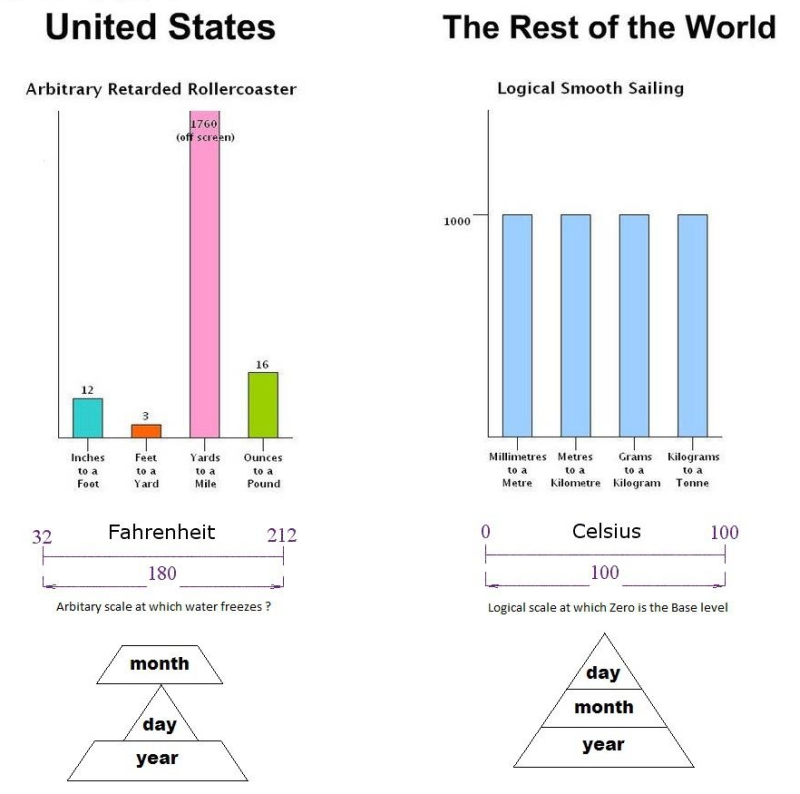this post was submitted on 30 Jun 2023
145 points (89.6% liked)
Standardization
453 readers
1 users here now
Professionals have standards! Community for all proponents, defenders and junkies of the Metric (International) system, the ISO standards (including ISO 8601) and other ways of standardization or regulation!
founded 2 years ago
MODERATORS
you are viewing a single comment's thread
view the rest of the comments
view the rest of the comments

And the craziest part is, American customary units are defined by metric. For example, a foot is legally defined as 30.84cm.
Meanwhile, a meter is legally defined as the length of the path traveled by light in a vacuum during a time interval of 1/299,792,458 of a second. Reproducible anywhere, if you have the resources.
People went through pains to standardize units in the form of natural phenomenon. When you do that, you're actually doing it for all units of measurement at once. Just because the result was initially published in metric doesn't mean that other systems didn't also immediately benefit from the definitions.
Since metric was used in creating these definitions, other systems just use a ratio of their system to metric because it's simpler, and also useful for conversations between cultures.
Historically, the values of these units have been refined over time. Since the people doing the research published in metric, as the official standards evolved, it was simpler to base other systems on the metric values so they changed at the same time. My point is, if the data were published in the Imperial system, then the metric ones would be listed as ratios to the Imperial system and not the other way around. The two systems are linearly related. Why do the work twice?
I'm not defending the Imperial system. It's difficult to work with. I'm just saying that your comment isn't the knock on it you seem to think it is.